THE MORGAN JOINS THE GOOGLE ART PROJECT TO OFFER UNPARALLELED VIEWS OF ITS FAMED McKIM BUILDING
- NEW YORK, New York
- /
- May 21, 2013
The Morgan Library & Museum announced today that it has added nearly 100 of its treasures to the Google Art Project.
The Google Art Project allows for these works—rare books, paintings, sculptures, and manuscripts—to be viewed in exceptional detail. In addition, the Morgan’s 1906 McKim building—an architectural gem comprising Pierpont Morgan’s Library and Study—can be appreciated in exciting new ways.
Google’s Street View feature allows users to explore each room. A specially designed Street View ‘trolley’ shot 360 degree images of the building’s interior, which were then stitched together to enable smooth navigation through the rooms. The custom built zoom viewer encourages the close examination of works of art and architectural details. The extraordinary murals in the Library’s nearly thirty-foot high ceiling, for example, are now visible online like never before. Similarly, it is now possible to closely examine the entire 12 x 24 foot sixteenth-century tapestry that hangs above the Library’s fireplace.
When Charles F. McKim (1847–1909) was retained as architect of “Mr. Morgan’s library,” he envisioned a building that would embody the Renaissance ideal of the unity of all the arts, integrating architecture, sculpture, and painting, and utilizing the finest materials and craftsmanship. The McKim building is considered one of New York’s great architectural treasures, and its interiors are regarded as some of the most beautiful in America.
Among the many highlights Google Art Project users can enjoy are the masterful Library and Rotunda ceilings, both the work of noted muralist Henry Siddons Mowbray (1858–1928); thousands of rare books contained within the Library’s inlaid walnut bookshelves; the 1530 Verrazano globe, one of the earliest known dated globes; the Gutenberg Bible (ca. 1455); paintings by Hans Memling and Perugino; ancient Near Eastern cylinder seals, dating from 3500 BCE; the Rotunda’s signature variegated marble surfaces and columns, mosaic panels, and columns of lapis lazuli; and Pierpont Morgan’s steel-lined vault, where he housed his most valued acquisitions.
"We are thrilled to be part of the Google Art Project," said Jennifer Tonkovich, curator in the Department of Drawings and Prints who coordinated the 2010 restoration of the McKim building. “This technology will allow our visitors to more fully explore this landmark building and the treasures it contains, while providing those unable to visit the Morgan with an opportunity to experience its extraordinary architecture and outstanding collections from anywhere in the world.”
Visitors to the Google Art Project can browse works by the artist’s name, the artwork, the type of art, the museum, the country, collections and the time period. Google+ and video hangouts are integrated on the site, allowing viewers to invite their friends to view and discuss their favorite works in a video chat or follow a guided tour from an expert to gain an appreciation of a particular topic or art collection.
The ‘My Gallery’ feature allows users to save specific views of any of artworks and build their own personalized gallery. Comments can be added to each painting and the whole gallery can then be shared with friends and family. It’s an ideal tool for students or groups to work on collaborative projects or collections. In addition, a feature called ‘Compare’ allows you to examine two pieces of artwork side-by-side to look at how an artist’s style evolved over time, connect trends across cultures or delve deeply into two parts of the same work.
The Art Project is part of the Google Cultural Institute which is dedicated to creating technology that helps the cultural community to bring their art, archives, heritage sites and other material online. The aim is to increase the range and volume of material from the cultural world that is available for people to explore online and in doing so, democratize access to it and preserve it for future generations.



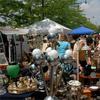

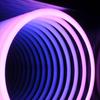

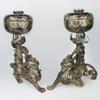

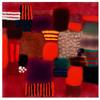
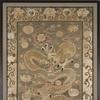

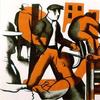


![Offering a Truce [Bested], 1895, is estimated to sell for between $1,300,000 and $1,800,000 on March 22, 2014, for The Russell: An Exhibition and Sale to Benefit the C.M. Russell Museum. Offering a Truce [Bested], 1895, is estimated to sell for between $1,300,000 and $1,800,000 on March 22, 2014, for The Russell: An Exhibition and Sale to Benefit the C.M. Russell Museum.](/images/c/a8/20/Dec10_Offering_a_Truce__Bested_300dpi100x100_c.jpg)